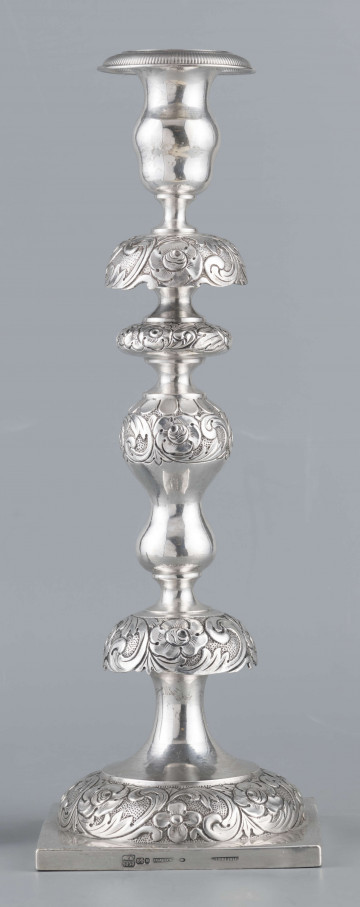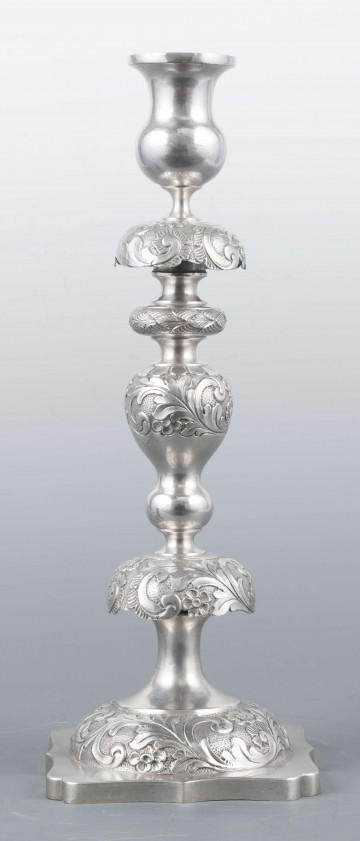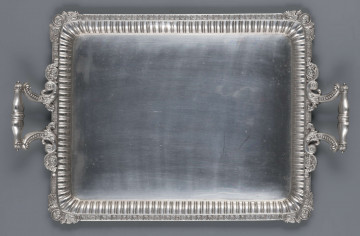
Candlestick
1858
National Museum in Lublin
Part of the collection: Polish and European goldsmithery of the 17th–19th c.
Due to its form, uncommon in the Kingdom, a 19th-century silver sugar bowl with elongated handles and was probably made to order from a Russian goldsmith. This small object (height 15.5 cm, width 20 cm) was made using the puckering technique, which involves hammering out decorative shapes on the surface of the object to produce randomly placed semi-circular or teardrop-shaped nodules, sometimes forming whole clusters. The foot of the sugar bowl is decorated with eight prominent knobs. The short shank is decorated with a row of pearls, while the pear-shaped body is covered with two rows of drop-shaped nodules – larger at the bottom, smaller at the top. Symmetrically placed on the sides, the two lugs in the form of the letter C, made of a circular shaft, were decorated with small leaves in the embeds. In addition, the lid has a handle in the form of a poppy surrounded by small leaves. The underside of the object bears an illegible goldsmith's punch and the segmented mark of the Moscow assay house – the assayer's monogram A.K., the date 1848 and the sample designation 84 (84 goldsmiths). Interestingly, until 1852 no silver sample was used in Poland.
Author / creator
Dimensions
cały obiekt: height: 20 cm, width: 15,5 cm
Object type
goldsmith's art
Technique
cast
Material
silver
Creation time / dating
Creation / finding place
Owner
The National Museum in Lublin
Identification number
Location / status

1858
National Museum in Lublin

1862
National Museum in Lublin

1835
National Museum in Lublin
DISCOVER this TOPIC
Museum of King Jan III's Palace at Wilanów
DISCOVER this PATH
Educational path